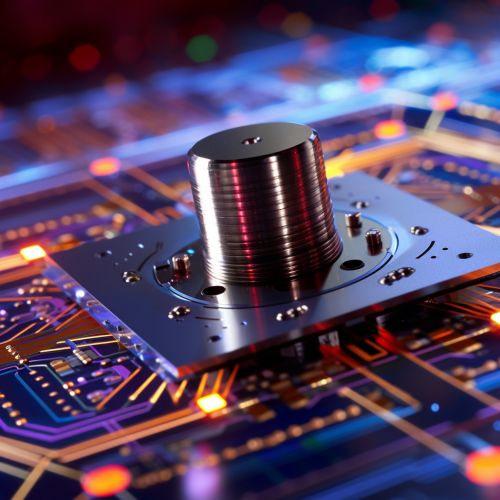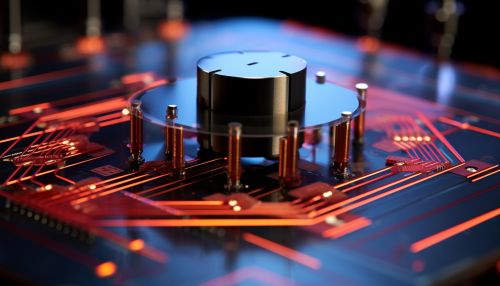Transmon Qubit
Introduction
The Transmon Qubit is a type of superconducting charge qubit that has been modified to increase its decoherence time, a key factor in the development of quantum computing. The transmon qubit is a crucial component in the field of quantum information science and quantum computing.


Design and Operation
The transmon qubit operates on the principle of quantum superposition and entanglement, fundamental principles of quantum mechanics. The design of the transmon qubit is similar to that of a Cooper pair box but with a significant difference in the shunting capacitor's size. This modification results in a reduction of the sensitivity to charge noise, a common issue in quantum computing.
Quantum Decoherence
Quantum decoherence is a significant challenge in quantum computing. The transmon qubit, with its modified design, has a longer decoherence time compared to other types of qubits. This increased decoherence time is crucial for the operation of a quantum computer as it allows for more complex computations to be carried out.
Applications
Transmon qubits are primarily used in quantum computing. They are a fundamental component of many quantum computing architectures, including those developed by IBM and Google. Transmon qubits are also used in quantum information science for tasks such as quantum error correction and quantum communication.
Advantages and Disadvantages
While the transmon qubit has several advantages, such as a longer decoherence time and reduced sensitivity to charge noise, it also has some disadvantages. These include a relatively low anharmonicity and the need for a large shunting capacitor, which can complicate the design and operation of a quantum computer.
Future Developments
The field of quantum computing is rapidly evolving, and the transmon qubit is at the forefront of many of these developments. Future research is focused on further increasing the decoherence time of the transmon qubit and reducing its sensitivity to noise.
